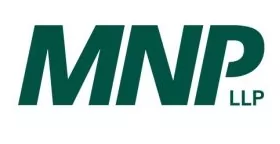The IASB has issued IFRS 15, Revenue from Contracts with Customers, effective for annual reporting periods beginning on or after January 1, 2017.
The standard is converged with a new U.S. GAAP standard issued at the same time. Here's how the IASB and the FASB sum up the importance of this step:
"Revenue is a vital metric for users of financial statements and is used to assess a company's financial performance and prospects. However, the previous requirements of both IFRS and U.S. GAAP were different and often resulted in different accounting for transactions that were economically similar. Furthermore, while revenue recognition requirements of IFRS lacked sufficient detail, the accounting requirements of U.S. GAAP were considered to be overly prescriptive and conflicting in certain areas.
Responding to these challenges, the boards have developed new, fully converged requirements for the recognition of revenue in both IFRS and U.S. GAAP—providing substantial enhancements to the quality and consistency of how revenue is reported while also improving comparability in the financial statements of companies reporting using IFRS and U.S. GAAP."
IFRS 15 defines revenue somewhat more simply than the existing standard IAS 18, as "income arising in the course of an entity's ordinary activities." The standard's core principle is that an entity "recognizes revenue to depict the transfer of promised goods or services to the customer in an amount that reflects the consideration to which the entity expects to be entitled in exchange for those goods or services. It sets out a five-step framework to apply in implementing this principle - the following is a very high-level summary of the framework:
- Identify the contract(s) with the customer
A contract is an agreement between two or more parties that creates enforceable rights and obligations.
- Identify the performance obligations in the contract
A contract includes promises to transfer goods or services to a customer. If those goods or services are distinct, the promises are performance obligations and are accounted for separately.
- Determine the transaction price
The transaction price is the amount of consideration to which an entity expects to be entitled in exchange for transferring promised goods or services to a customer.
- Allocate the transaction price
An entity typically allocates the transaction price to each performance obligation on the basis of the relative standalone selling prices of each distinct good or service. If a standalone selling price is not observable, the entity estimates it.
- Recognize revenue when a performance obligation is satisfied
An entity recognizes revenue when (or as) it satisfies a performance obligation by transferring a promised good or service to a customer (which is when the customer obtains control of that good or service). The amount of revenue recognized is the amount allocated to the satisfied performance obligation. A performance obligation may be satisfied at a point in time (typically for promises to transfer goods to a customer) or over time (typically for promises to transfer services to a customer). For performance obligations satisfied over time, an entity recognizes revenue over time by selecting an appropriate method for measuring its progress towards complete satisfaction of that performance obligation.
For some entities, these five steps might all entail differences from existing practices. For example, the emphasis in step 5 on identifying when the customer obtains control of goods differs from the existing recognition guidance in IAS 18, which focuses on whether the significant risks and rewards of ownership of the goods have been transferred to the buyer. In many respects, such as the treatment of transactions containing multiple elements, the new standard provides much greater detail than IAS 18. The new standard also contains more extensive disclosure requirements, often requiring greater disaggregation of information and greater discussion of key judgments and policy decisions, among other things. It also addresses accounting for costs related to contracts with customers, directing that a company recognizes an asset for the incremental costs of obtaining a contract if those costs are expected to be recovered.
All entities, other perhaps than those clearly not at or approaching a revenue-generating stage, will have to consider the impact of IFRS 15. As with most new standards, some entities will be able to determine relatively easily that the impact on their financial reporting is not significant. For others, the standard will have a fundamental impact on how they report revenue, requiring changes to reporting systems and processes, and perhaps causing them to reassess some aspects of their customer contracts. Compared to some new standards, the impact of these changes may be more likely to affect key performance indicators and therefore may be of keener interest to analysts and other users.
All of this provides a strong incentive to start considering the impact of the standard sooner rather than later. On implementation, the standard must be adopted retrospectively – that is, the amounts reported in the year of adoption will be calculated as if the standard had always applied (subject to some practical expedients). However, the standard allows a choice between fully restating comparative figures and presenting the cumulative impact on previous years as an adjustment to opening retained earnings.
This is clearly an extremely summarized version of the standard. In future posts, I hope to cover many of its aspects and implications in greater detail.
The content of this article is intended to provide a general guide to the subject matter. Specialist advice should be sought about your specific circumstances.

